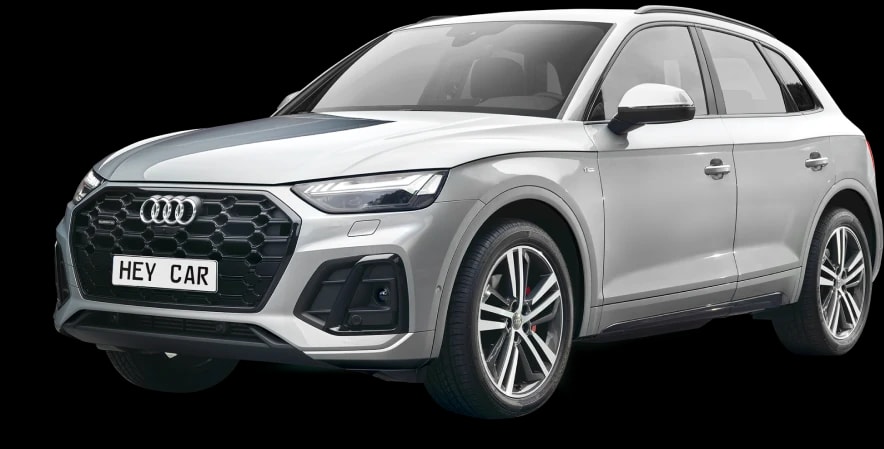Mercedes-Benz B-Class (2012-2019) Review
Written by Andrew Brady
Quick overview
Pros
- Lots of cabin space for passengers and luggage
- Great level of safety kit
- Strong range of engines
Cons
- Firm ride, particularly on higher spec models
- Noisy diesel engines
- Infotainment system not up to that of rivals
Overall verdict
"Posh, stylish, practical, affordable? It’s tricky to make a car that covers every one of these, but the premium MPV, or beefed-up hatchback, is one way of attempting it. The Mercedes-Benz B-Class is one of just a few cars that attempts to blend posh and practical but without the huge price tag of some of the brand’s bigger SUVs."
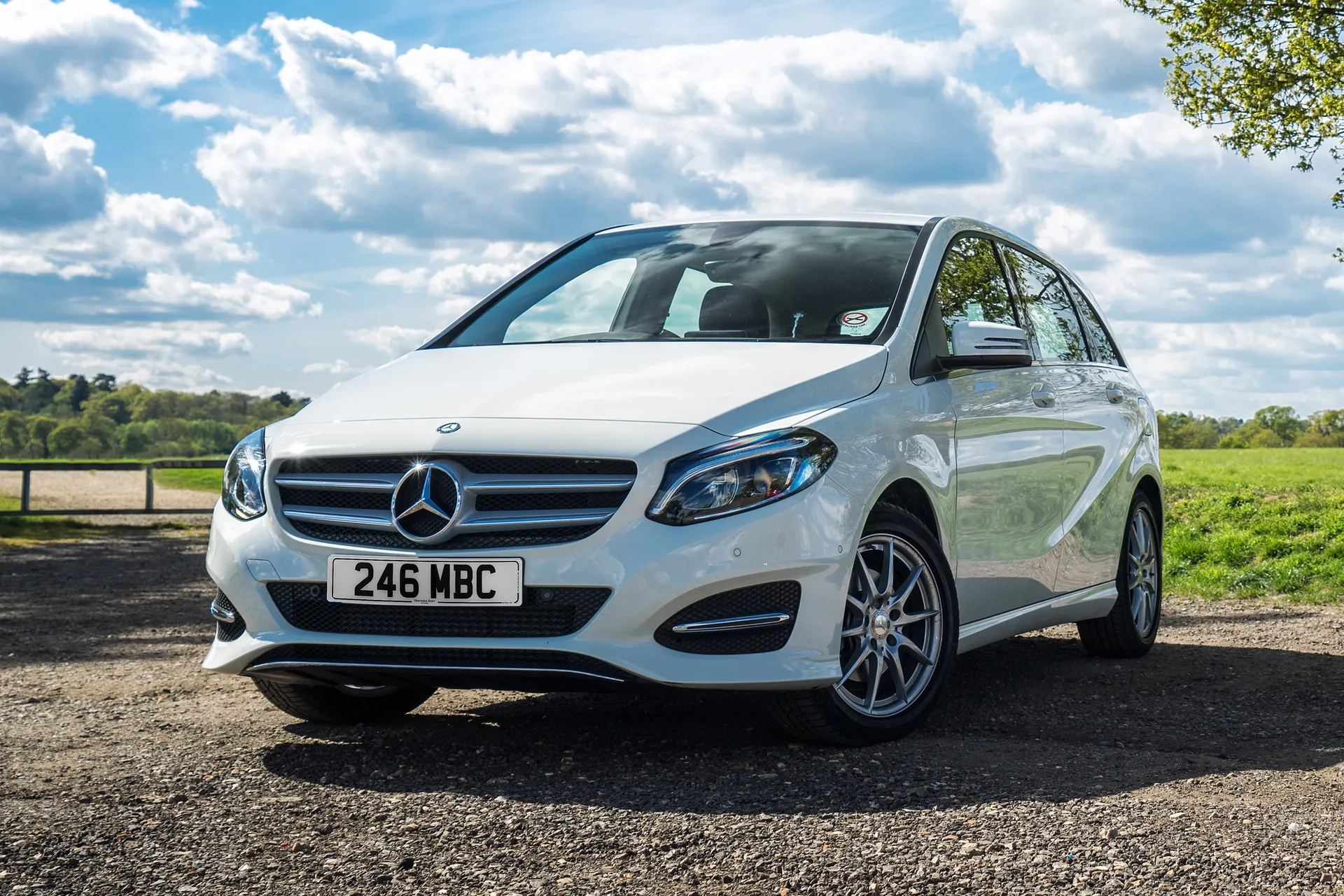
There are other brands that have offered a similar big hatchback/small people carrier type car – the BMW 2 Series and the Volkswagen Golf SV to name two – but they are a real rarity.
The overall idea is a development of what you saw with the original Mercedes-Benz A-Class, which means high sides, a single box styling and interior space for a family of five and all their stuff. This means it is something that could be considered by those who might be otherwise looking at the likes of the Ford C-Max but wanting something with a bit more pizzazz.
The high up styling translates to a raised driving position, which means you get a good view out the front and to the side of the B-Class. There are some thick pillars to the rear though, which makes the view over your shoulder a little trickier, but Mercedes handily chucks a reversing camera in as standard to help on that front.
The engine range comprises a selection of petrol and diesel options, with two of the former and three of the latter by the time this generation of B-Class came to the end of its life in 2018. The petrol options consist of a 1.6-litre engine in two different power outputs named B180 and B200, while the diesel range boasts a 1.5-litre B180 CDI and two versions of a 2.1-litre diesel – the B200 CDI and B220 CDI. You can also get the latter with Mercedes’ 4Matic all-wheel drive system.
The lower powered models are ok for low-speed town life, but the more powerful options are the better bet if your life has more variety in it. If you have the choice of the lot then the B220 CDI is the one that will appeal to most – it has the same official economy and lower emissions than the lower powered B200 CDI despite being quicker.
Don’t expect much in the way of driving thrills from the B-Class, though, whichever engine you go for. The handling is average at best. To stop the tall-sided car from rolling around through the corners, Mercedes has fitted it with stiff suspension, which results in a firm ride that isn’t very family friendly.
One real bonus is the level of kit you get, which is generous – there isn’t a poverty spec version to be found in the B-Class range. SE, Sport and AMG Line are the three main trims, with even the basic model coming with a reversing camera, leather-substitute trim, a seven-inch screen and active parking assist.
Step up to the Sport model and you get more tech and visual goodies, while the AMG Line is the one with a body kit and lowered suspension.
The safety and practicality might draw some in, but the B-Class loses out in several other key areas. It isn’t that much fun to drive and that Mercedes badge makes it expensive compared to alternatives that offer the practicality without the premium image.
Looking for a used car for sale? We've got 100s of Mercedes-Benz Approved Used Cars for Sale for you to choose from, including a wide range of Mercedes B-Class models for sale. If you're looking for the newer version, you need our Mercedes B-Class review.
Is the Mercedes-Benz B-Class right for you?
The level of kit in the Mercedes-Benz B-Class makes it an attractive prospect for those seeking value for money, but truth be told it will be the badge and premium finish that will appeal to others.
It doesn’t offer extra seats or particularly clever interior layouts, so its selling point as a family car is simply a big boot, sliding rear seats and a decent amount of passenger room. This doesn’t make it stand out in its class particularly, but it does make it a more compelling prospect than a standard hatchback.
What's the best Mercedes-Benz B-Class model/engine to choose?
If you’re going to go for a posh MPV/hatch then you might as well go for broke on the engine, too, and head for the most powerful B220 CDI. It offers more power and performance than the B200 CDI but the same official fuel consumption so it shouldn’t be any more expensive to run so long as you drive it sensibly. Brand new it might have been hard to justify the jump, but the gap may have narrowed with used models.
In terms of the trim, it is better off sticking to the lower end of the range and finding a model that has had a few options added to it. The AMG Line adds sportier suspension and bigger wheels that make the B-Class’s ride that bit less comfy. SE trim’s smaller wheels will be comfier to live with.
What other cars are similar to the Mercedes-Benz B-Class?
There hasn’t been a big push for posh MPVs from customers, so there aren’t many of them out there as direct rivals. The BMW 2 Series Active Tourer, and to a certain extent the Volkswagen Golf SV, are direct equivalents, but otherwise you are looking at non-premium models like the Ford C-MAX or small SUVs like Mercedes’ own Mercedes GLA.
Comfort and design
"One benefit of sitting up high as you do in the Mercedes B-Class is that you get a good view out of a car’s cabin. This is definitely the case when you look out the front of the B-Class, with the visibility out the front and sides clear. The higher vantage point also lets you see over other smaller and lower road users, which is handy at junctions."
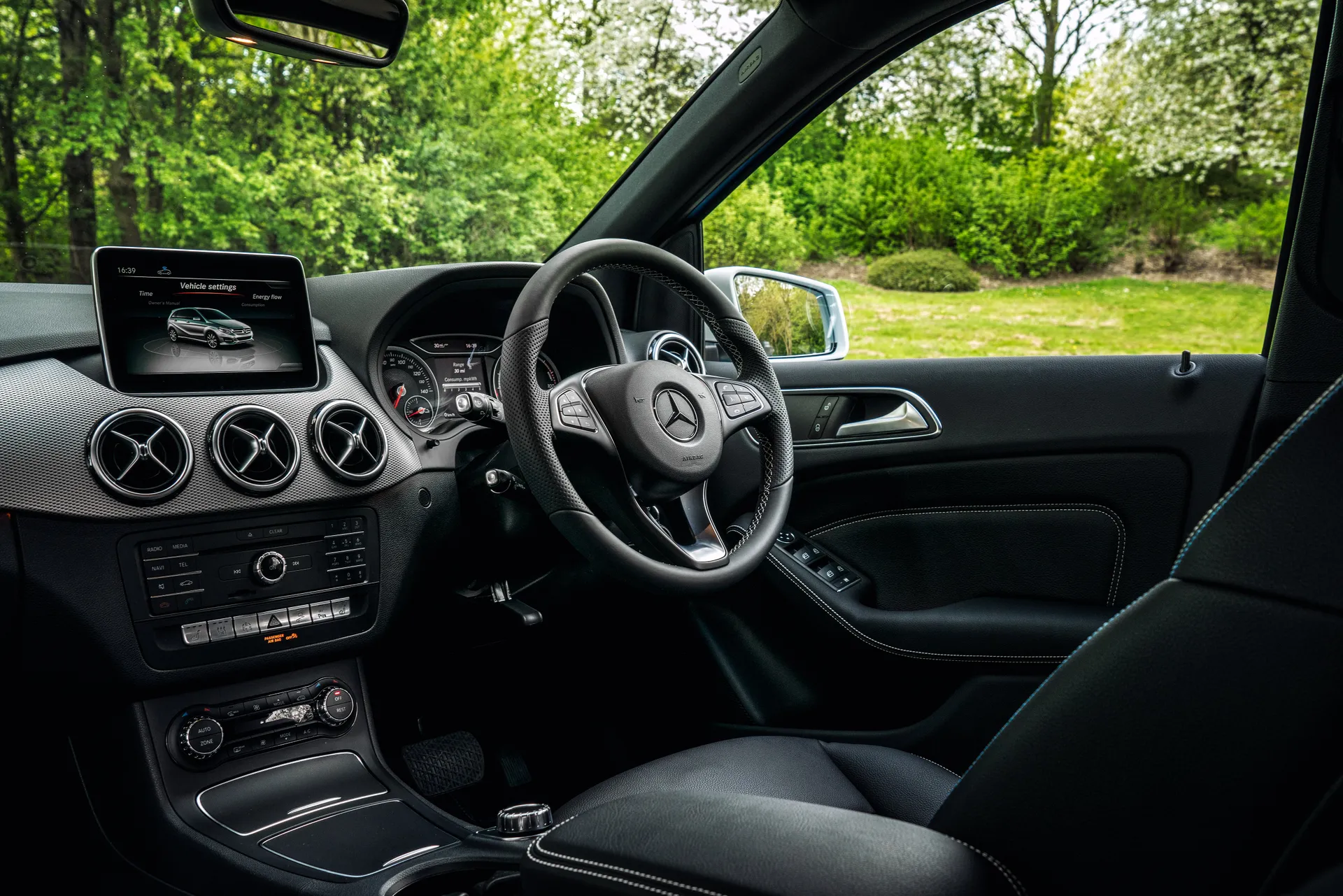
The big pillars between the rear-most windows and the back windscreen are less helpful, though, and they get in the way when you are trying to cast a glance over your shoulder. One thing that helps lessen the impact of this big pillar is the standard-fit rear-view camera.
The seats themselves have plenty of space up front, and there is a wide range of adjustment available. As well as all the usual alterations you can make to the seat position, you can also tweak the length of the cushion you sit on, and vary the angle it is set at.
Being a tall car, there is never any problem with head room in the Mercedes B-Class, with adults able to fit into all five of the seats without any problem whatsoever.
The dashboard and controls are clear and well laid out, and the standard fit screen has a clear look to its display. The actual screen doesn’t look as smart as alternatives do in rival cars, though, as it sits up on the top of the dash and looks a little like a tacked-on aftermarket affair. In the likes of the Volkswagen Golf SV it is integrated and looks much smarter.
Quality and finish
The Mercedes experience in the B-Class goes beyond just the badge on the bonnet as the cabin delivers a premium feel throughout. Every surface, dial, button and control you come into contact with backs up the first impression, too. The materials are excellent and everything feels like this is a premium car.
The white-on-black dials are clear to see and look slick and the trio of stylish central air vents are as much about upgrading the look of the dash as they are cooling the cabin. They are attractive aluminium affairs, with the same material featuring on the door handles, the stereo and the heater controls to continue this experience, too, and there isn’t a cheap-feeling element to be found.
Whether you go for the cloth trim or the leather upholstery the seats feel just as well constructed. Both will take the hefty demands of family life, although the latter is obviously more suited to being wiped down if spills are still a part of any long (or short) journey.
Infotainment
Mercedes’ infotainment system sits high up on the dash, and the actual display looks smart. However, the system itself is used to control a lot of the car’s other functions, and many of these are buried deep in the menus. This can mean some time-consuming and annoying fiddling around when a single and simple shortcut button would do the same job.
The screen is a seven-inch one on the SE model while higher trims get an eight-inch display. The functionality is decent, though, with Apple Carplay and Android Auto a standard feature, while there are also two USB ports. DAB digital radio was only a cost option, though, so not all used models will feature it.
However, navigation was a standard-fit feature on all but the basic SE model, and it was a £500 option so there is a higher chance that it will be on used models.
Space and practicality
Tall drivers (and passengers) rejoice. The Mercedes B-Class’s height means that there is a generous amount of space in the cabin for those with big hair, hats or just those that are taller than average. The boxy design means that this extra height is available whether you sit front or rear in the B-Class.
Taller passengers won’t feel short changed in terms of leg room in the back, either. The sliding rear seats mean that you can shove them all the way back to make sure that even the longest of legs will be accommodated, and with space spare to jam some bags around them if needs be.
This isn’t the case across all three seats, though, as the middle seat isn’t the equal of those on either side. It is narrower and a bit firmer than the other two, so passenger who ends up there won’t thank you on a longer journey.
The slightly narrow middle seat means that you will only be able to fit two child seats into the back – there are only Isofix points on the two outermost seats.
The amount of space in the boot depends on how far you slide those seats back and forwards. Maximise the rear passengers’ legroom and you still get a decent 488 litres of space but slide those seats all the way forwards and you get as much as 666 litres of room. Fold those seats down and the space increases to 1,547 litres.
Small elements add to the practicality, too – some standard and some optional – including a height adjustable floor and a collapsible storage box. For those with dogs or hobbies with dirty equipment there’s even a load-sill protector to keep the paintwork at the entrance intact.
The only downside for the B-Class is that there are only five seats on offer, while the likes of the BMW Gran Tourer and less premium MPVs are available as seven seaters.
Handling and ride quality
"The Mercedes’ ride and drive are its weakest suit. It pitches itself somewhere between an MPV and a family hatchback but doesn’t offer the benefits of either. It isn’t as comfortable to drive as an unashamed people carrier and it isn’t as driver focused as a hatchback, despite trying to mix elements of both cars."
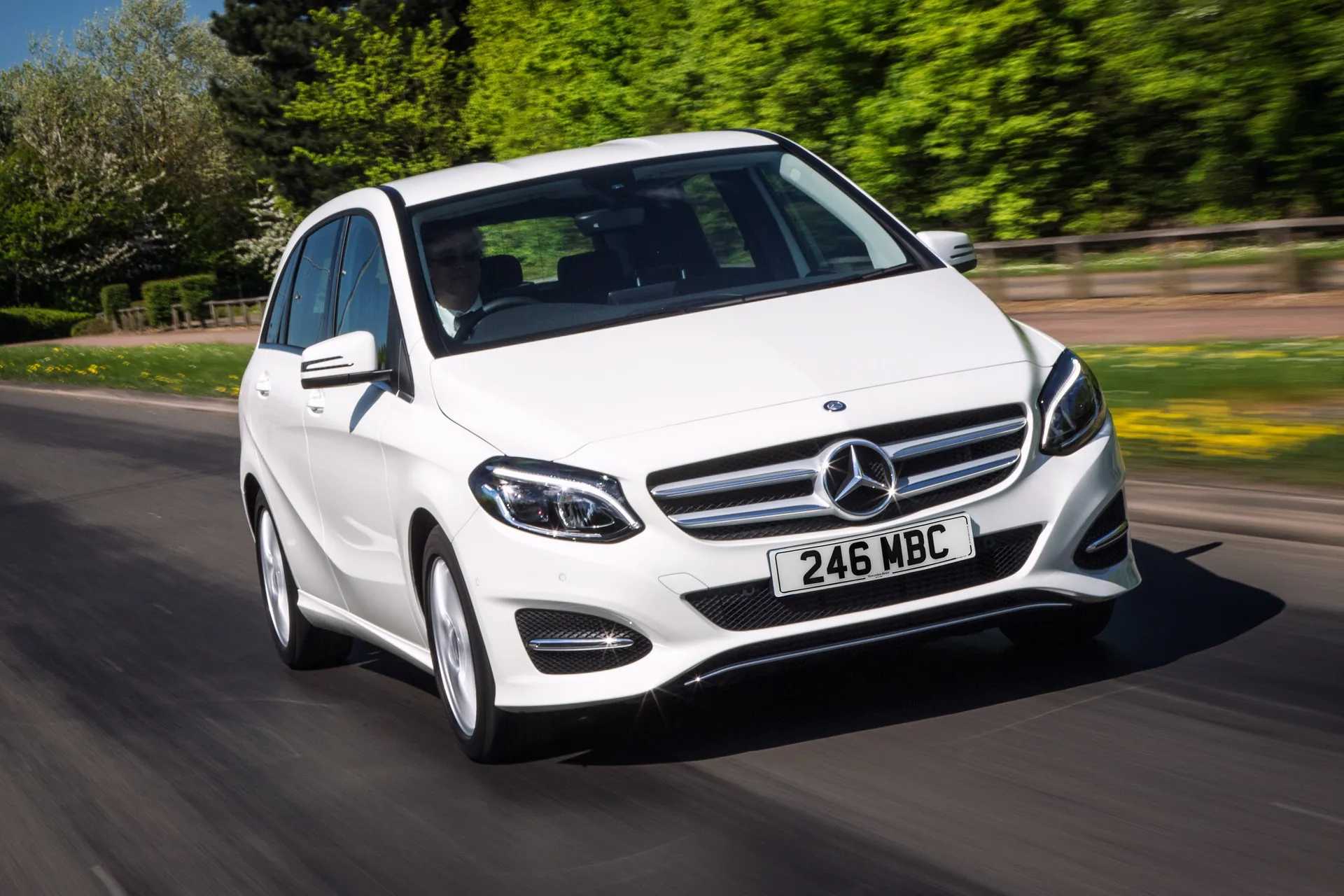
The biggest issue is the suspension, which feels stiff and unforgiving whether you are driving down a motorway or pottering around town. In both cases it never really settles down and it produces a series of rocking and pitching movements that are not ideal for a family car. If you have young passengers that value a comfortable ride then this is potentially less than ideal.
The high ride height is one reason why the suspension is so firm, as Mercedes looks to stop the B-Class leaning into the corners when you head around a bend at speed. In one sense, it’s good that Mercedes has achieved its goal, as you can indeed throw the B-Class around a corner without it rolling around all over the place. Is this really what an MPV should do, though?
Frustratingly, if you head up the range then things only really get less comfy. The Sport model has stiffer suspension and the AMG-Line even more so. This means that the car is just too unforgiving on roads that are pockmarked with potholes. Not an uncommon concept in the UK…
Sadly, this stiffness doesn’t translate into sportiness. The power steering is inconsistent, which means it isn’t a fun car to drive either. When the wheels are pointing straight ahead the steering is a little too light, but it swiftly gets too heavy when you turn around a corner.
Engines and gearboxes
There is a wide range of engines on offer in the Mercedes B-Class, with three diesels, two petrols and even an electric version, which was introduced in 2017.
The petrol engines are 1.6-litre units with either 122PS or 156PS. The entry-level diesel is a 109PS 1.5-litre while the other two are both 2.1-litre engines with a choice of 136PS or 177PS. The electric model is closely allied to the highest-powered diesel, with 179PS in its most powerful mode.
The lower-powered versions of the petrol and diesel engine are better suited to those who are going to spend the majority of their time around town, where they give a good showing in terms of economy, but the more powerful equivalents are the more preferable option if your needs are more varied.
Every version comes with the choice of a six-speed manual or a seven-speed automatic gearbox, all apart from the most-powerful diesel that is, which is only offered with the seven-speed auto. The auto is excellent, if sometimes a little slow to change,
The final option, which is again only offered on the top-spec diesel, is Mercedes-Benz 4Matic all-wheel drive, which bumps up both the price and the emissions, so you have to really need four-wheel drive to justify the choice.
Refinement and noise levels
The diesels in the B-Class are not the quietest of engines, with a fair chunk of noise and vibration making their way into the cabin. This is more noticeable at lower speeds and at tickover, but it raises its voice when you accelerate hard too. It settles down when you get up to motorway speeds There is still a fair amount of wind noise at higher speeds, though, as there is in all models.
The petrols are much better on the engine volume front, keeping noise more in check in all scenarios, but none are capable of matching up to the near-silent experience you get in the electric model.
Safety equipment
Reassuringly, safety equipment is offered generously on the B-Class, which is one reason why it performed admirably in its only EuroNCAP crash test. That said, that was back in 2011 at a time when said tests were not as stringent.
However, the kit that featured as standard was reassuringly good. Collision Prevention Assist, which helped brake in the case of a potential accident was standard fit from the start of the B-Class’s life and this was then upgraded to Collision Prevention Assist Plus from the 2014 facelift. This then helped out in the case of a potential rear-end impact as well.
Other safety kit offered as standard includes an attention alert system that monitors the driver’s fatigue levels and a hill start and hold system.
Maximum EV range
The EV version was Mercedes’ first mainstream electric model, and offered an official range of 124 miles. Don’t expect that as a regular offering in the winter, though.
MPG and fuel costs
"The petrol engines in the B-Class all claim around 50mpg, with little to choose between them. The automatic versions are the ones that shade it slightly, but with official figures only around 2mpg higher than the manuals."
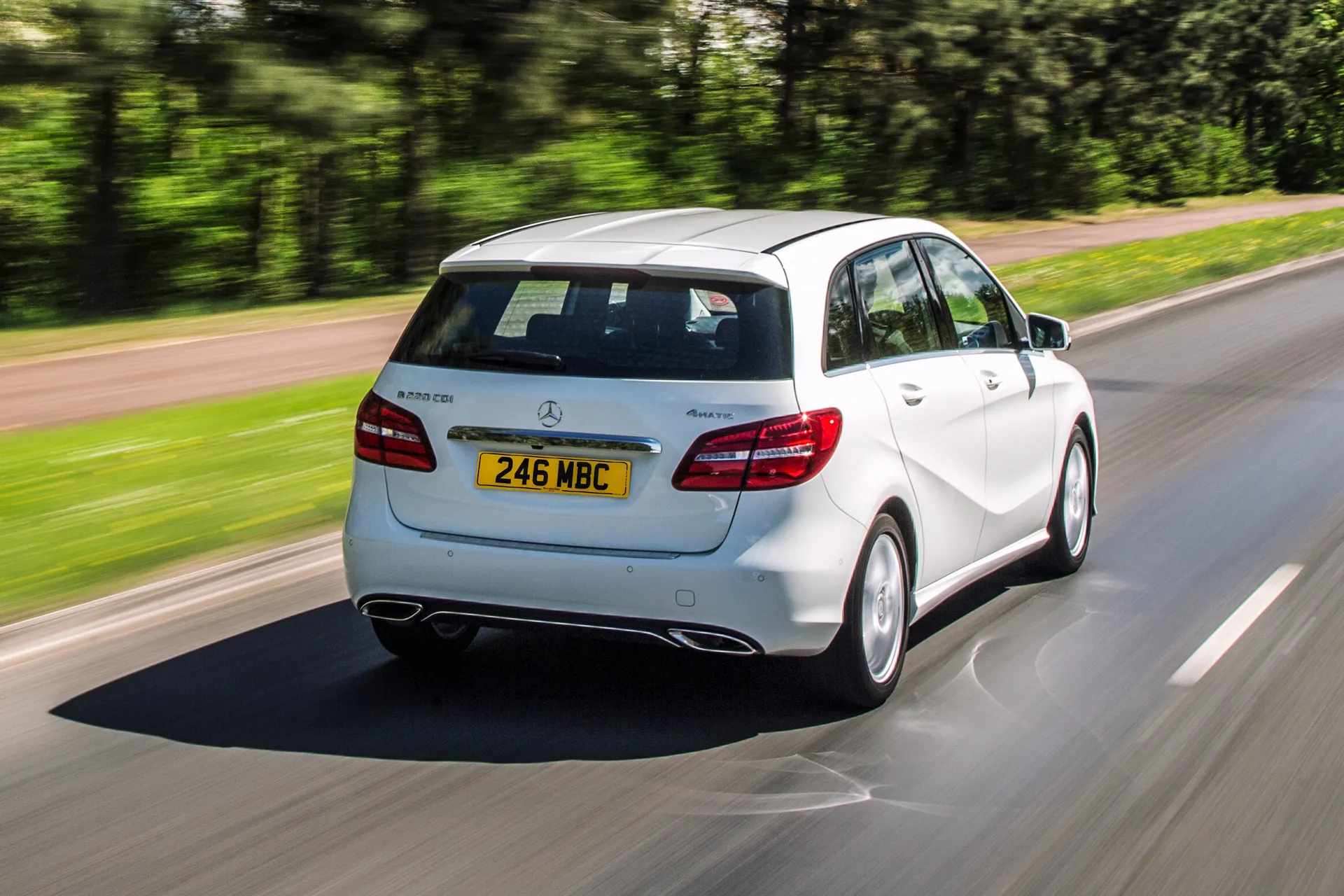
The same is largely true for the three diesels, which hover close to the 70mpg mark. Again, the figures are much the same for the automatic and manual models. The big outlier is the 4Matic all-wheel drive version, which takes a hit of around 20% on its official fuel economy, taking it down to around 55mpg, so you would have to really want all-wheel drive to make it worth going for.
On average, you can expect to get about 80% of those official figures, so something in the mid 50s should be a realistic goal for the diesel models while around 40mpg for the petrol and 4Matic models would be about average.
Charging it from a home wall box will be an overnight affair, taking around nine hours. If you have access to an admittedly rare 400V charging post, then it will replenish the batteries in just three hours.
Insurance groups and costs
Despite the premium nature of the Mercedes badge, the B-Class sits in similar insurance groups to more mainstream models. The range goes from group 15 for the B180 CDI up to 24 for the B220 CDI, which is comparable to the likes of the Ford C-Max and BMW 2 Series Active Tourer. As a result, it shouldn’t set you back any more than rivals.
VED car tax
None of the B-Class models went above £40,000 so all are eligible for the lower rate of VED car tax. The highest emitting models creep up to 132g/km – the petrol engines with the manual gearbox reach that figure – while none get below 100g/km. The B200 CDI with the auto gearbox is the one that musters the lowest figure, of 104g/km, so will be the most efficient to run as a company car. This means that the ones made before 2017 will also enjoy relatively low VED bands, too, meaning tax bills aren’t too testing.
How much should you be paying for a used Mercedes-Benz B-Class?
"Stepping up from the manual to the automatic gearbox cost around £1600 across all the various trims. Moving from SE to Sport adds about £1000 while the step from Sport to AMG Line added around £1300."
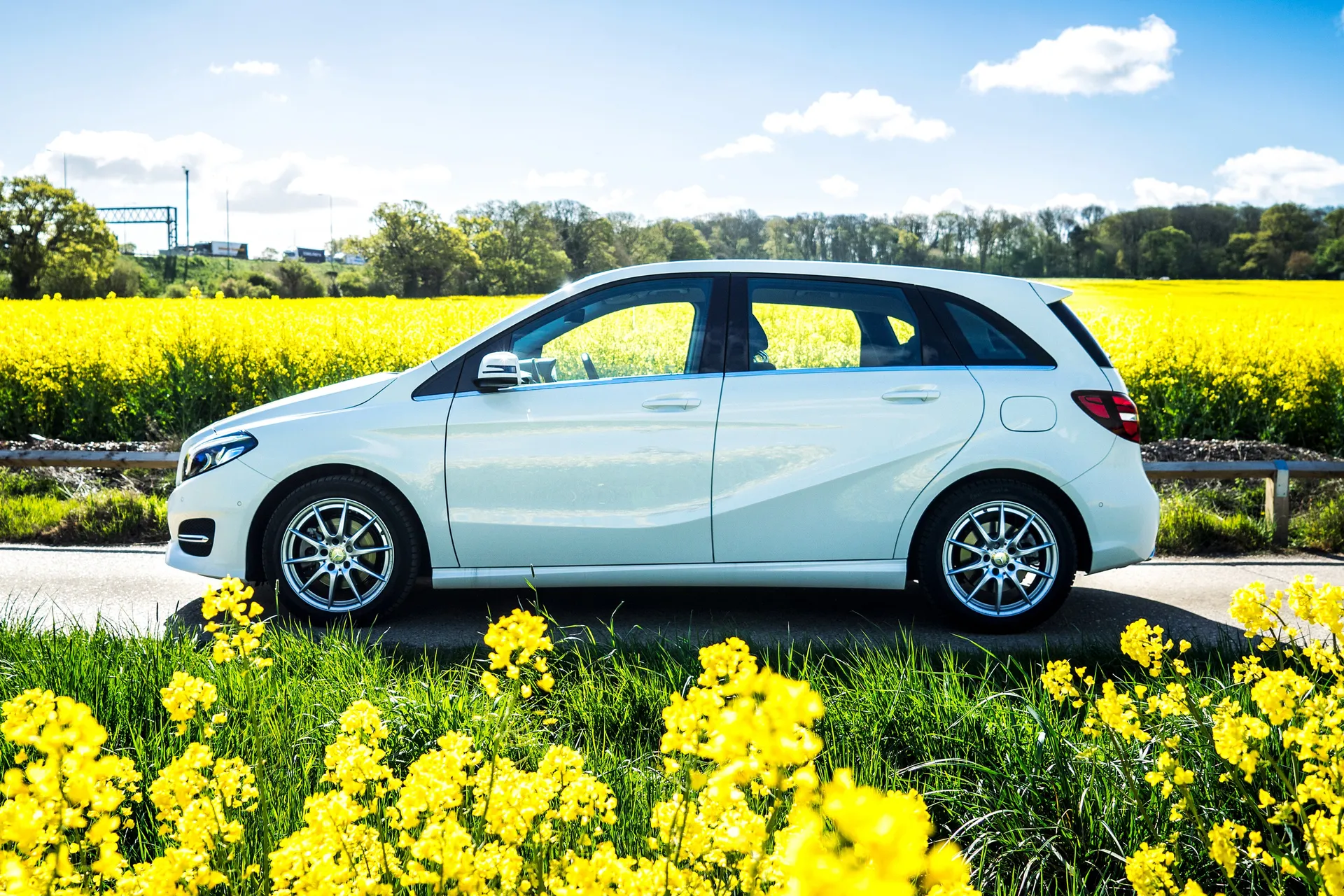
The B-Class holds on well to its value, which means that used prices look fairly strong. At three years old, values are around the 50% mark, dependent on the usual variables. The premium badge and high level of equipment help with this.
Trim levels and standard equipment
Picking a trim level on a Mercedes B-Class isn’t solely down to the equipment you get. As you move higher up the range, the bigger the alloy wheels get and the stiffer the suspension gets, which negatively impacts how the car rides. On this basis, the SE trim is the pick of the bunch, although in an ideal world the first owner would have added a couple of bits of kit.
That said, SE trim comes with a decent level of equipment, including 16-inch alloy wheels, comfort suspension, active park assist, Collision Prevention Protection Plus, smartphone integration and a reversing camera. Sport’s main additions are 17-inch alloys, twin tailpipes and rain sensing wipers. AMG Line moves up to 18-inch alloys and brings an AMG body kit, lowered suspension and bi-zenon headlights.
Get our latest advice, news and offers
Keep me updated by email with the latest advice, news and offers from heycar.
By submitting you agree to our privacy policy